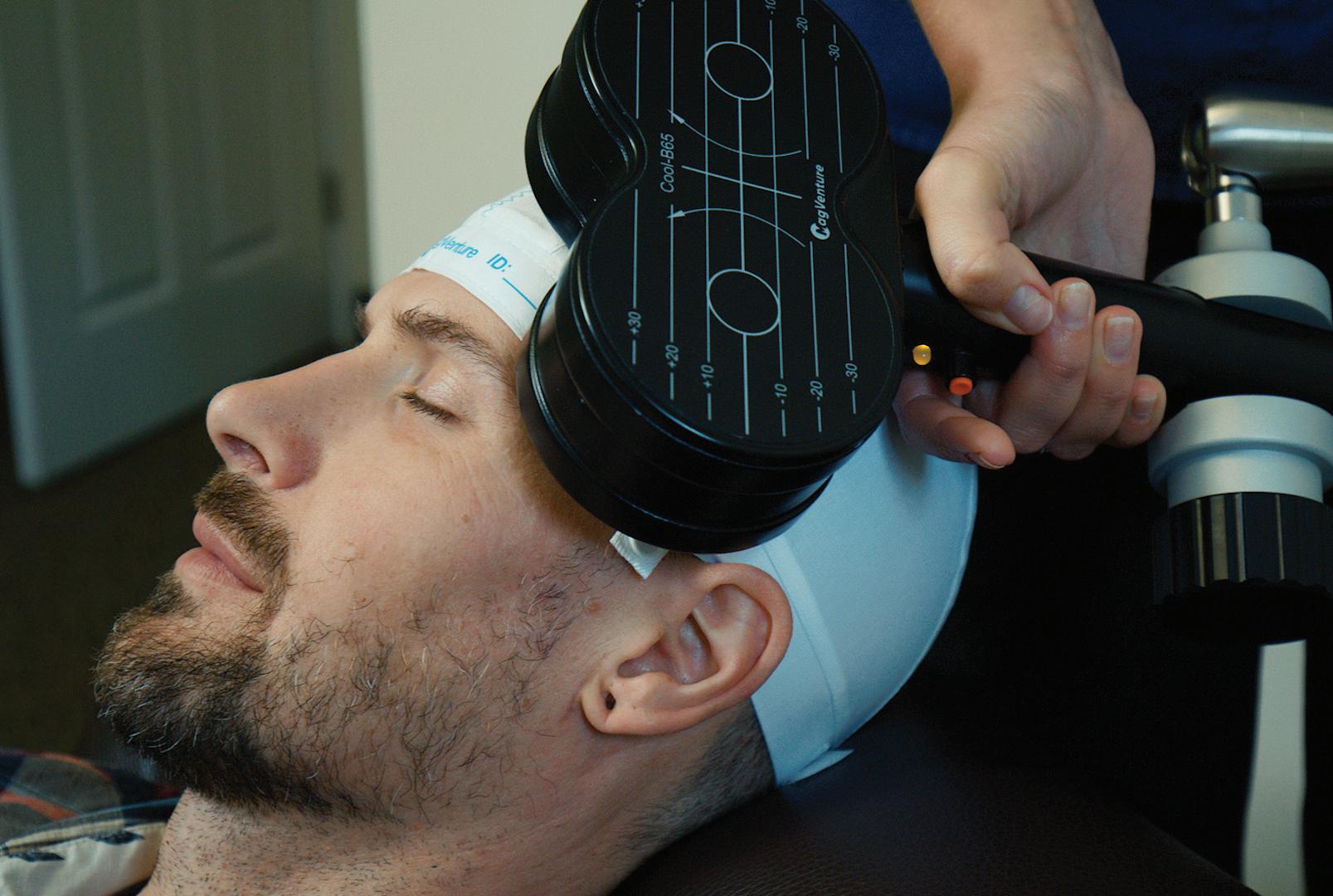








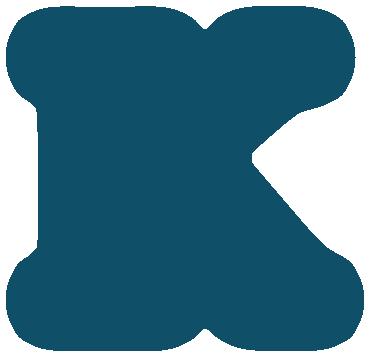


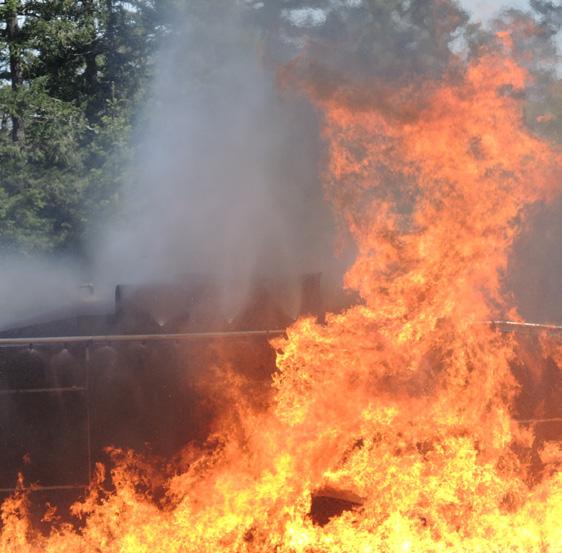




















Join us for IAW as we celebrate the cultural heritage and beliefs of Indigenous Peoples. We are committed to creating a welcoming environment which enhances MARPAC's relationship to Indigenous Peoples.
Ken Hall, Civilian Co-chair, and Lt(N) Agnes Millman, Military Co-chair
CFB Esquimalt DIAG
We iNvite you to tAKe pArt iN tHe ACtivities pLANNed
duriNg tHis WeeK:
Wednesday 24 May
Come join us at the CFB Esquimalt Fire Hall for a traditional Bannock Bake Off. Several members of the Defence Indigenous Advisory Group will bake their traditional Bannock, served alongside local jams.
Where: CFB Esquimalt Fire Hall



When: 1400–1600 hrs
Thursday 25 May
"Reconciliation is a path walked together," is this years IAW theme. We invite you to tune in and listen to


our guest speaker Todd Ormiston from Camosun College. Todd is a Northern Tutchone and Tlingit First Nation member, who will share his research on allyship and trauma-informed practice. He will also share the effects of colonization on Indigenous Peoples and how colonization has led to trauma and inter-generational trauma. He will also include online resources for participants at the end of the presentation. The presentation will be 90 minutes in duration.
When: 1045–1200 hrs
Where: Microsoft Teams Meeting
Join on your computer, mobile app or room device
Meeting ID: 233 805 693 13
Passcode: aGm4SE
Video Conference ID: 114 353 112 5

Or call in (audio only) +1 343-803-5382,,924811418#


Canada, Ottawa-Hull
Phone Conference ID: 924 811 418#
Friday 26 May 23
Join us at the Base Chapel for a traditional Smudge. Smudging is a cultural ceremony practised by a variety of
Indigenous peoples, and the practise is meant to cleanse the soul of negative thoughts of a person or place, connect to spirit and create a positive mindset for those involved.
Where: Base Chapel, CFB Naden
When: 1000–1100 hrs
Royal BC MusEuM
Interested Indigenous Military and civilian members can register to pull items from the Royal BC Museum archives, indigenous artifacts from their respective Nations. Members can ask questions and also partake in the Sacred Journeys Exhibit. Priority will be given to DIAG members, and those who identify as First Nations and their elders who would like to partake. Maximum number of participants is limited to 12 per group, with two group showings.
Where: Royal BC Museum
When: 1300–1500 hrs
For More iNForMAtioN CoNtact: +ESQ DaaG P-ESQDaaG@ iNterN.MiL.CA
A typical HCRFF serial sees trainees don protective firefighting gear and work with fire hoses in teams of three or four to knock down the flames and enter the aircraft to perform rescue operations. Pipes inside the crash trainer feed it natural gas for its flames and a sprinkler system provides water to prevent the structure from overheating, with intensity of the flames and flow of the water manipulated by technicians working in a nearby control tower.
General deterioration indicated sub-systems were nearing the end of their lives and there was an urgent need for their replacement. It resulted in a recapitalization project aimed at refurbishing the key components. In addition, the upgrade was an opportunity to change the configuration of the previous model based on the CH-124 Sea King design to the CH-148 Cyclone, currently in service in the Navy.
reCApitALizAtioN projeCt:
• Life Cycle Materiel Managers at DGMEPM,
• Defence Construction Canada,
• Real Property Operations (RPOps),
• Fleet Engineering, Naval Training Group HQ;
• Private sector partners.
The new HCRFF trainers were built by US-based KFT Fire Trainers. Lookout
peter Mallett Staff WriterSpewing great balls of fire, a new helicopter crash rescue firefighting (HCRFF) trainer for Naval Fleet School – Pacific (NFS(P)) entered service at Damage Control Training Facility (DCTF) Galiano in Colwood on May 12.
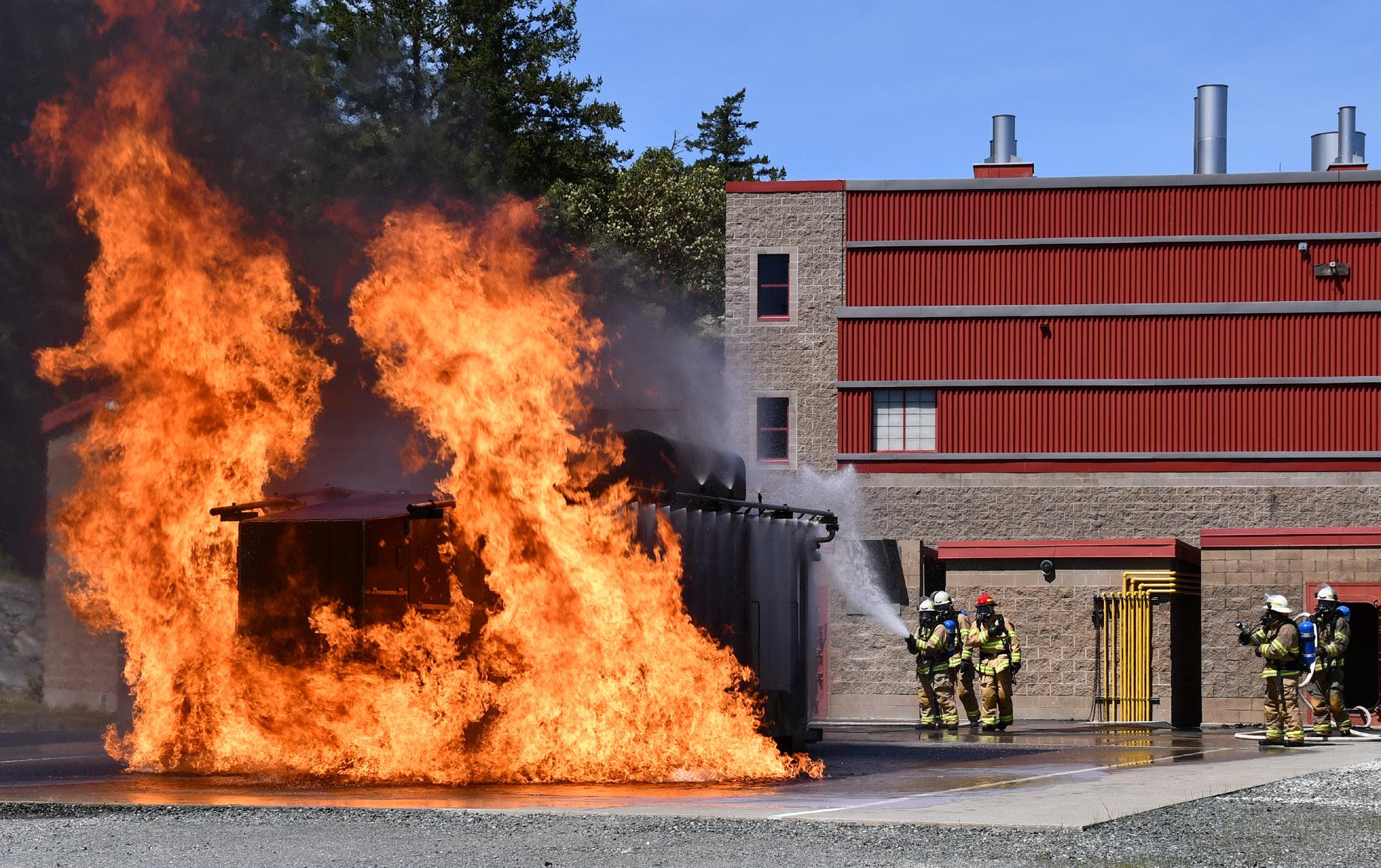
The return of the HCRFF training capability is an important occasion for the Royal Canadian Navy (RCN) – for the last two years, Maritime Forces Pacific personnel had to conduct this specialty training at DCTF Kootenay, an identical facility in Halifax.
“We can finally get back to training our own helicopter crash rescue firefighters,” said Lieutenant-Commander (LCdr) Paul LePrieur, Damage Control Division Commander for Naval Fleet School (Pacific).
LCdr LePrieur said HCRFF training instruction is one of the foundations of operational excellence in Canada’s Navy. The training is mandatory for all members of the HCRFF team
embarked in His Majesty’s Canadian (HMC) ships and required for ships to conduct flight operations.
Starting June 1 trainees will recommence practical exercises aimed at honing life-saving skills on how to respond to a helicopter emergency. The trainer is designed to resemble the Sikorsky CH-148 Cyclone embarked in HMC ships.
The HCRFF upgrade project in Halifax was completed in 2021. Efforts at DCTF Galiano were hampered by the effects of COVID-19, resulting in a two-year delay, said LCdr LePrieur. The new trainer incorporates many lessons learned from the earlier Sea King model, built by Kidde Fire Trainers (KFT) two decades ago. Enhancements include replaceable exterior panels and an increased water supply to protect the structure from heat stress and corrosion generated by the flames.
While the training serial is quite a spectacle to students and visitors, its arrival improves long-term sustainability at Fleet School and the RCN, says Commander (Cdr) Maude OuelletSavard, Commandant of NFS(P), who oversaw its implementation.

“It will enhance our ability to pre-
pare sailors for service onboard ships,” Cdr Ouellet-Savard said, “which highlights why the training process is so fundamentally important to the RCN’s reconstitution efforts.”
It’s no small coincidence DCTF Galiano and DCTF Kootenay carry the names of two RCN vessels, said Rear-Admiral (RAdm) Christopher Robinson, Commander Maritime Force Pacific, who presided over the ribbon-cutting ceremony.
“Helicopter operations and Replenishment at Sea (RAS) refueling efforts are two of the most dangerous operations for sailors aboard ships during peace time,” he said.
HMCS Galiano was a patrol vessel during the First World War and saw 36 sailors lost at sea during a storm near Haida Gwaii in October 1918.
HMCS Kootenay saw nine of its sailors killed and 53 injured from a gearbox explosion off the coast of England in October 1969.
“Both disasters speak to the importance of always being vigilant, always training and having world-class facilities such as this to preserve life,” RAdm Robinson said.
Damage Control Facility (DCTF) Galiano was named after the only Royal Canadian Navy (RCN) vessel lost during the First World War. DCTF Galiano entered service with the Royal Canadian Navy in May 2003. The facility represents a safe and controlled environment for military staff to develop and deliver training to approximately 5,000 personnel per year for a wide range of specialty skills including:
• Firefighting (Initial, Refresher, Advanced, Submarine and Helicopter Crash Rescue specialties)
• Flood Control (Initial, Refresher)
• First Aid (Standard and Medical First Responder)
• Chemical, Biological, Radiological, and Nuclear Defence (CBRN)
• Damage Control (Battle Damage, Control System and Team Training)
• Hazardous Material (HAZMAT) Team Training
Source: Naval Personnel Training Group (NPTG)
Managing Editor
Jazmin Holdway jazmin.holdway@forces.gc.ca
Editor Kate Bandura
250-363-3130 kateryna.bandura@forces.gc.ca
WritEr Peter Mallett mallett.peter@cfmws.com
ProdUC tion
teresa Laird
Leslie Eaton
250-363-8033 production@lookoutnewspaper.com
250-363-8033 workstation3@lookoutnewspaper.com
aCCoU nt S / rECEP tion
trina Winters
advErtiSing
250-363-3127
Joshua Buck 778-977-5433 sales@forcesadvertising.com
EditoriaL adviSorS
Lt( n ) Michelle Scott
250-363-4006 rodney venis 250-363-7060

FrEnCH EditoriaL adviSor a /Slt alexandre Springer alexandre.springer@forces.gc.ca
Published each Monday, under the authority of Capt(N) J. Jeffrey Hutchinson, Base Commander.
Le LOOKOUT est publié tous les lundis, sous l’égide du Capv J. Jeffrey Hutchinson, Commandant de la Base. The editor reserves the right to edit, abridge or reject copy or advertising to adhere to policy as outlined in PSP Policy Manual. Views and opinions expressed are not necessarily those of the Department of National Defence.
Le Rédacteur se réserve le droit de modifier,de condenser ou de rejeter les articles, photographies, ou annonces publicitaires pour adhérer au Manuel des politiques des PSP. Les opinions et annonces exprimées dans le journal ne réflètent pas nécéssairement le point de vue du MDN.



anxiety, learning to set better boundaries, or processing trauma. Intent invites an activation of will. It invigorates motivation to achieve set goals.
Lookout contributor
Will counselling be successful? Most people yearn for success when they decide to follow through with any venture. However, success is unique to the individual.
openness. Expressing oneself freely and allowing yourself to be vulnerable isn’t easy. Little white lies and omissions often permeate the onset of therapy, followed by circumventing topics or shutting down through denial. It’s vital to move at a manageable pace.
Tip: If you notice you have constrained a thought, feeling, or body sensation, reflect on why you did so and if you think it would be essential to share later.
Circulation: 2,000 plus 300 pdf downloads per week


Follow us on Facebook, Twitter and Instagram to join our growing social media community.
A Division of Personnel Support Programs
CFB Esquimalt, PO Box 17000 Stn. Forces, Victoria, BC V9A 7N2 Web: www.lookoutnewspaper.com
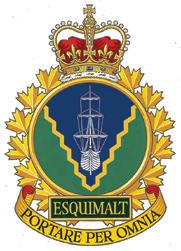
Fax: 250-363-3015
Canadian Mail Product Sales Agreement 40063331
How do you qualify success? Success is typically related to a short-term or a long-term goal. The goals you and your therapist set out are, in essence, the guide to your success. With one, success in counselling becomes much easier. Collaborating with your counsellor on what you’d like your goals to be is an essential process in therapy. Attainment of short-term goals organically folds into larger accomplishments. The counsellor plays a significant role in guiding you to your success, so there must be a trust-based rapport between the two of you. If there is mutual openness, compassion and willingness to confront what needs to be confronted, success in the larger sense can often be achieved.
Other factors can strengthen one’s capacity to succeed in counselling; please remember these should not be viewed as a strict recipe.
Intent. Intentionally aiming to accomplish something in counselling can vary; examples include establishing better sleep hygiene, developing self-soothing techniques for


optimism. What often comes in the way of optimism is a fear of success and an inability to visualize a world that isn’t. Optimism combats the human condition to reside in the present self. With success comes change and the shedding of an older version of oneself. Having confidence in overcoming current struggles embodies the potential to do so. Are there instances of unsuccessful counselling? Yes, typically due to a mixture of incompatibility with the counsellor and an inability to confront various fears, amongst other factors. Yet, when success inevitably occurs, remaining steadfast and leading with humility is essential to not finding yourself back where you started. Stay mindful and understand that what goes up must come down.
Thomas Goenczi is an RCN Veteran and MA Clinical Counsellor with Private Practice: Well Then Therapy.
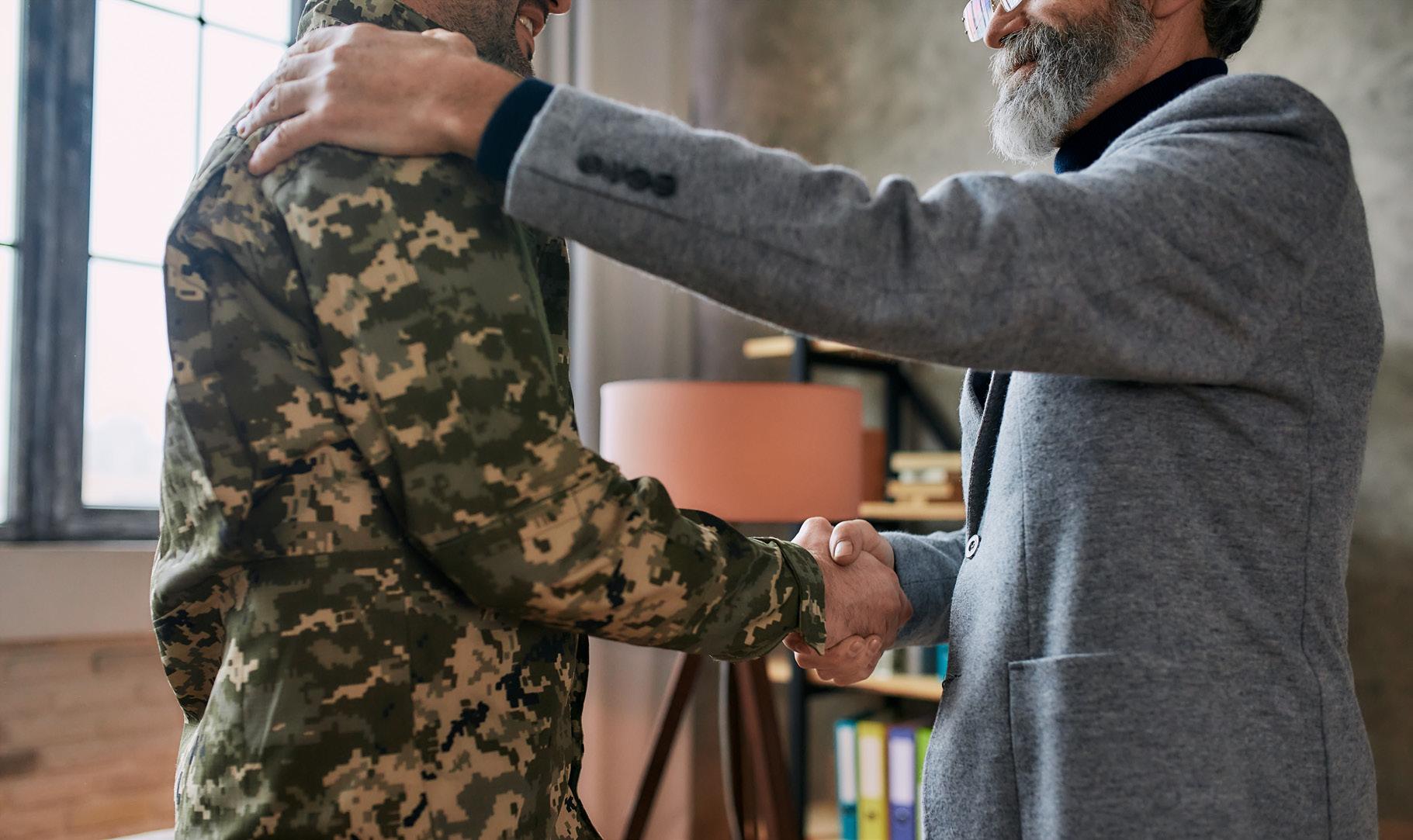
The content is not intended to be a substitute for professional advice, diagnosis, or treatment. Always seek the advice of your mental health professional or other qualified health provider with any questions you may have regarding your condition.

~ thomas goenczi
When Petty Officer First Class (PO1) (ret’d) Hedley Cullen received his devastating Huntington’s disease (HD) diagnosis at the Base Hospital in 2013, his Steward career with the Royal Canadian Navy (RCN) was cut short.
Now, the 53-year-old father of four is leading a fight for awareness and funding for the genetic brain disorder.
On May 27 at 10 a.m. at Captain Jacobson Park in Esquimalt, Cullen and the Huntington Society of Canada, Vancouver Island and Gulf Islands Chapter are holding a walk to raise funds and awareness for HD. They hope to attract support from Esquimalt’s military community.

“I am doing this to help raise funds for research and a possible cure but also to support all the children out there and the next generation of people that will someday need to come to terms with an HD diagnosis,” he said.
“The military has such good connections with the community, and I am certain people out there will learn more about HD and want to support us and help us fundraise or spread awareness,” he said.


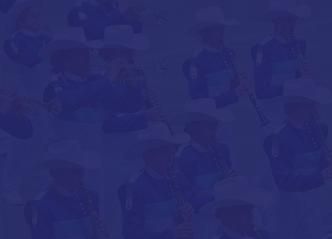

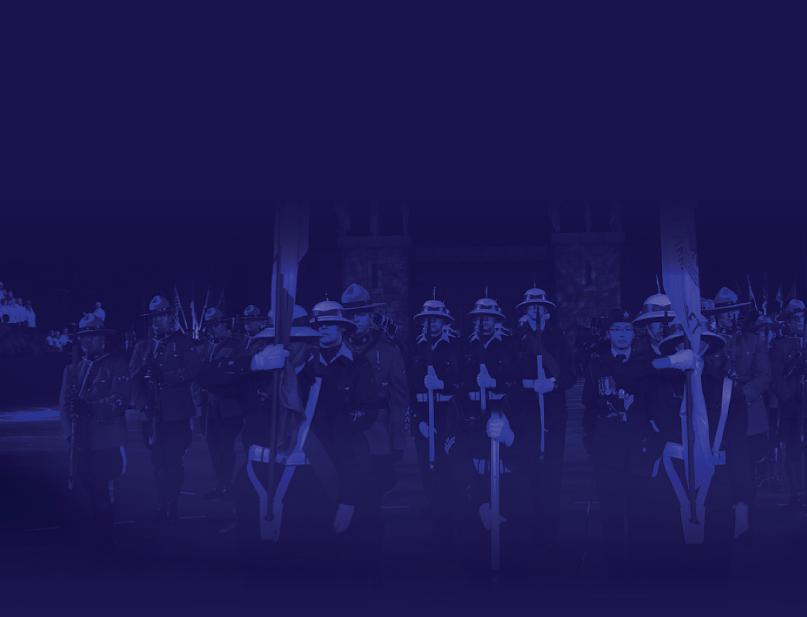



Cullen served 25 years in the Royal Canadian Navy on both coasts.
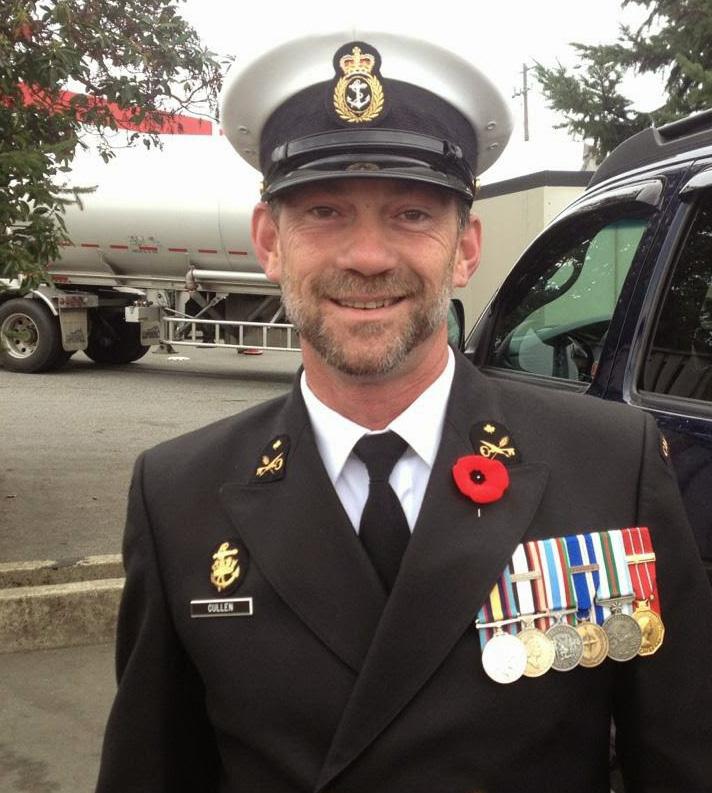

“My chief came to the waiting room at the hospital and said, ‘If you get better, we will promote you’,” remembers Cullen. “I told him, ‘Post me to the Joint Personnel Support Unit (JPSU) because my career is coming to an end’.”
A decade has passed since his diagnosis.
These days, Cullen uses a cane to get around. Some of his symptoms include loss of memory, uncontrollable shaking, and involuntary dance-like movements. His symptoms make many of the simplest tasks, such as cleaning his home, impossible. He takes five medications three times daily to combat the symptoms.

Although his quality of life is dramatically reduced, Cullen says he isn’t giving up his resolve to stay healthy or to fight HD. In March, Cullen became President of the Huntington Society of Canada, Vancouver Island and Gulf Islands Chapter.
Josh Croisetiere, a former RCMP officer and Royal Canadian Air Force Electrical System Technician who served six years with the 450 Tactical Helicopter Squadron in Edmonton from 1973 to 1979, said Cullen’s positive attitude despite everything going on in his life inspired Croisetiere.
“Once you meet someone like Hedley in person, you realize how serious this disease is and feel compelled to help,” said Croisetiere.
Now, he is working hard to drum up sponsorship for the walk. He and his wife, Susan Nickerson, now Volunteer Event Coordinator for the local chapter, initially connected with Cullen on a Facebook Page. Once educating themselves about the disease and Cullen’s plight, they decided to join the fight.
“The local chapter hasn’t had a HD walk since 2016; Hedley felt compelled to get involved and raise awareness and funds for research for a cure,” Nickerson said.
Cullen encourages those who can’t take part to consider participating in the virtual walk to help raise funds.
An Ontario philanthropist has agreed to dollar-match all funds raised when this year’s fundraising campaign wraps up on June 30. Funds raised will go to research and support services for Huntington’s disease. To register and for more information on the virtual or in-person walks, visithuntingtonsociety.ca/ or on the Huntington Society Facebook Page.
As May is Huntington’s Disease Awareness Month, the Township of Esquimalt will participate in the global ‘Light it Up 4 HD’ campaign, which sees municipal buildings light up in blue for HD and purple for juvenile Huntington’s disease. This year will also mark the return of an in-person walk in Victoria.













HuNtiNgtoN's diseAse
HD is a rare disease that affects approximately 1 in 7,000 people. With its complex array of physical, mental, and emotional symptoms, HD is characterized by the progressive loss of memory, uncontrolled movements, psychiatric disturbances, and cognitive decline. There is currently no known cure or treatment to stop its progression. Each child of a parent with HD has a 50 per cent chance of inheriting a gene mutation that leads to the progression of HD.
Every person living with HD will experience symptoms and progress differently. Signs and symptoms usually appear between the ages of 35 to 55.
Physical symptoms: involuntary dancelike movements (called chorea); diminished coordination; difficulty walking, talking, and swallowing; weight loss.
Cognitive symptoms: difficulty with focus, planning, recall of information and making decisions; impaired insight.
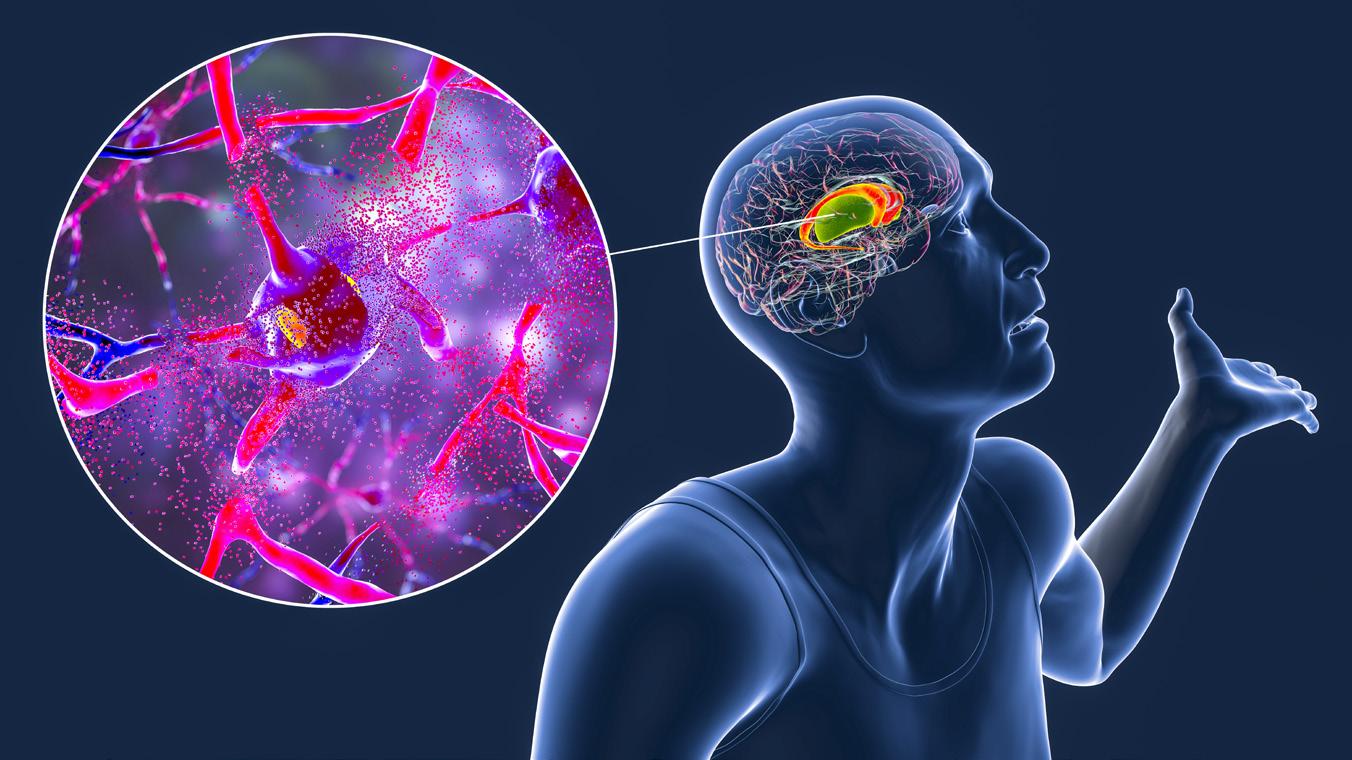
Psychiatric symptoms : depression, apathy, irritability, anxiety, and obsessive behaviour.
Source: Huntington Society of Canada


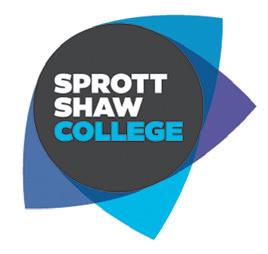


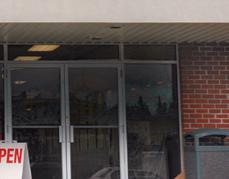




















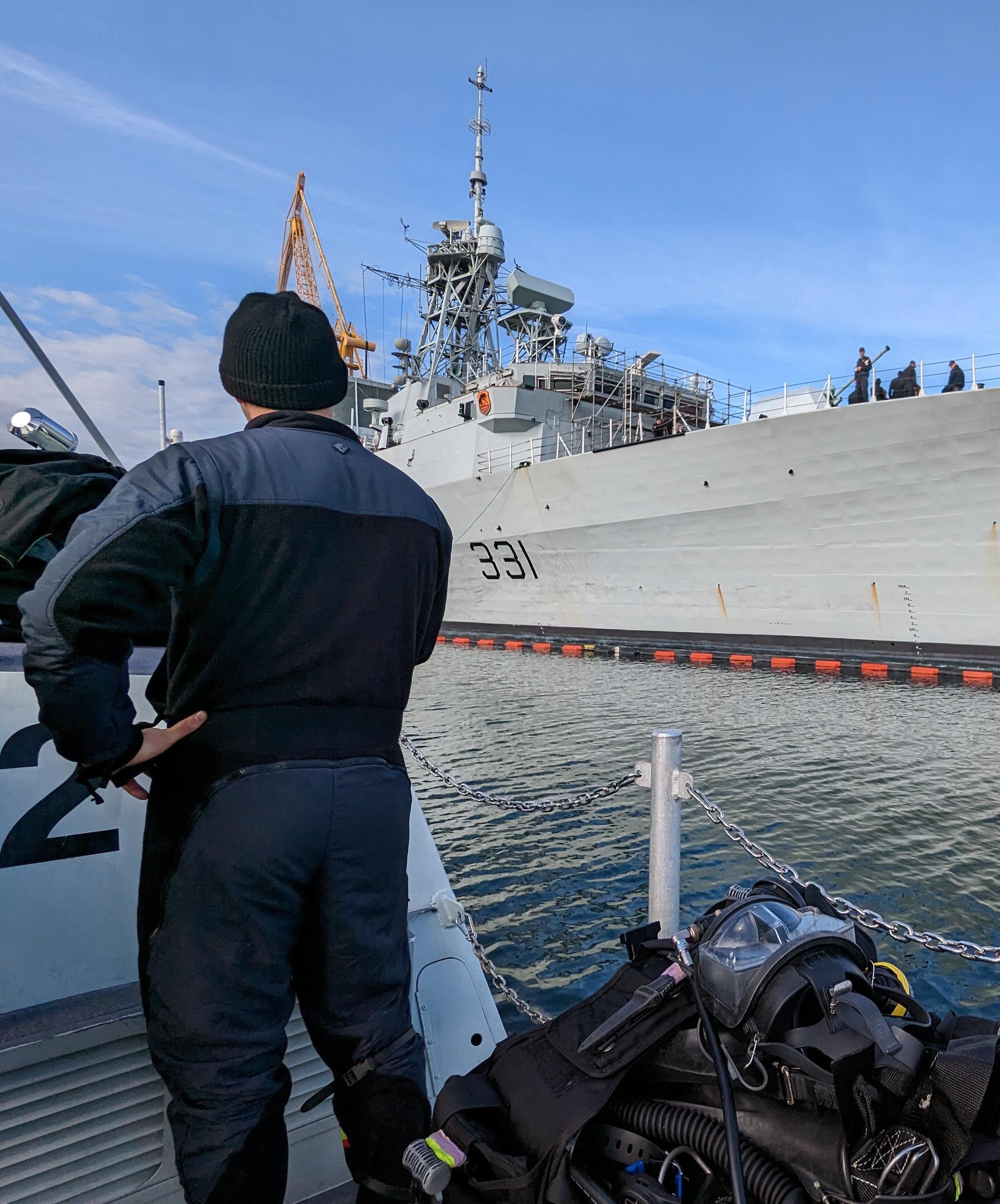
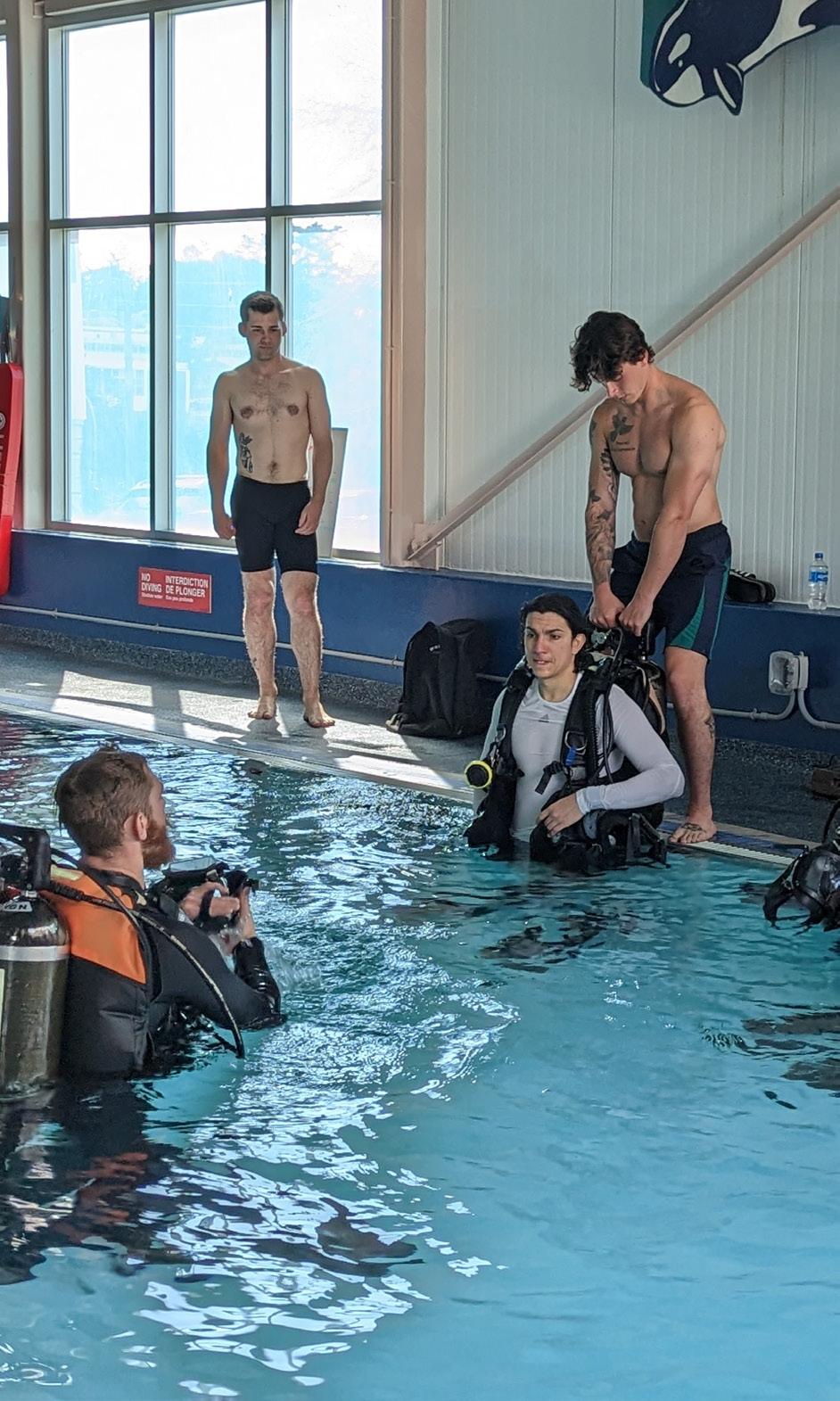



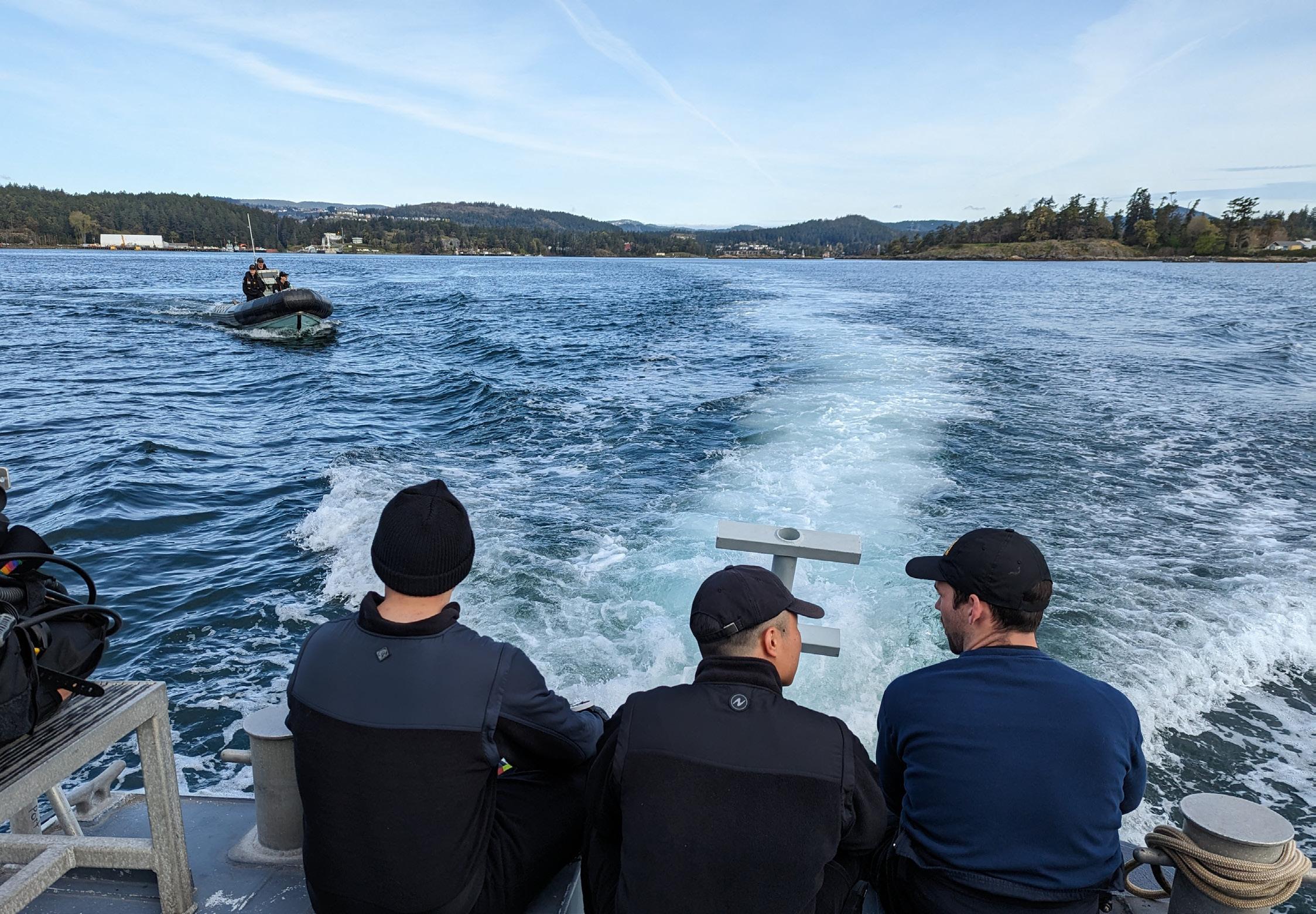
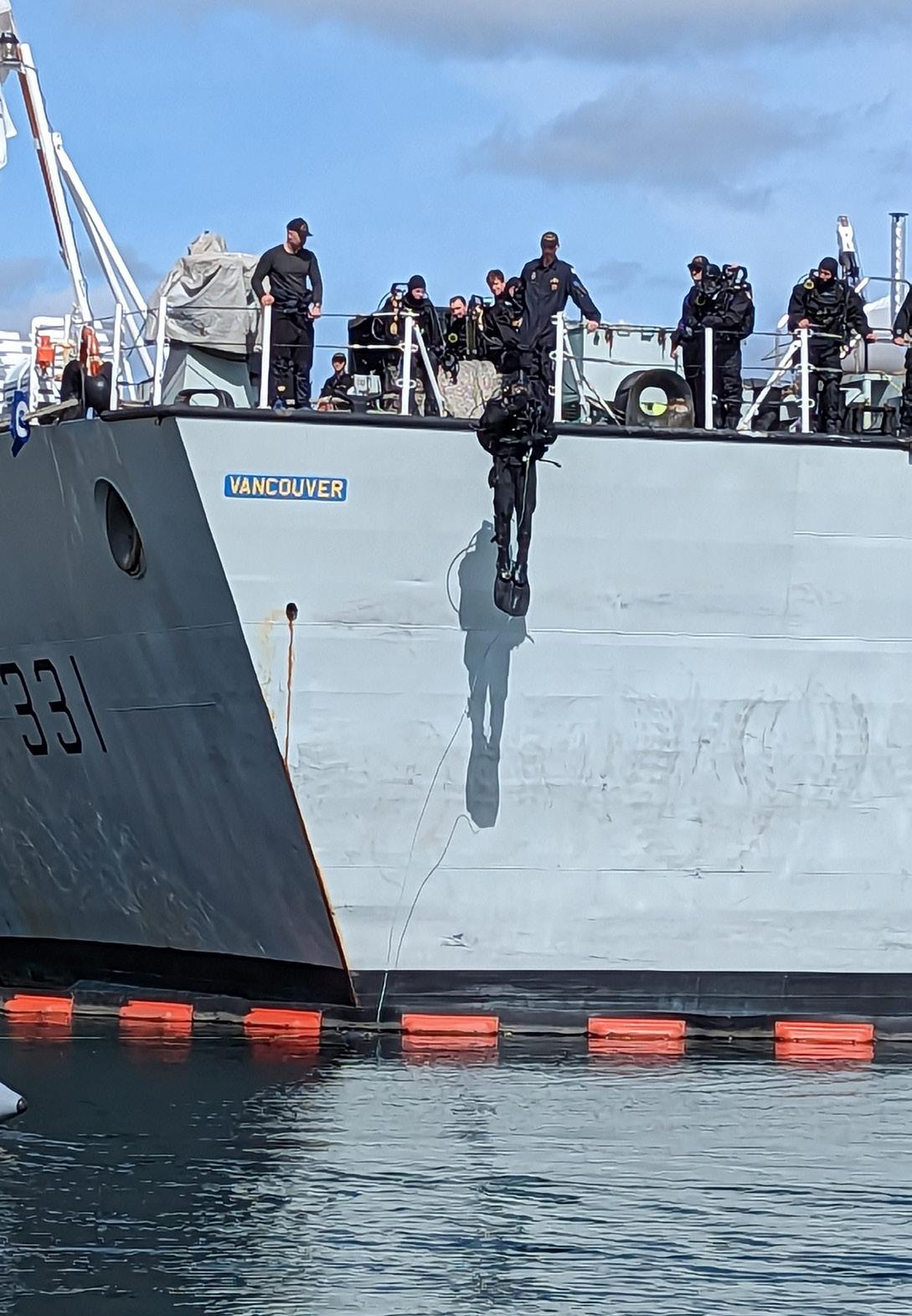
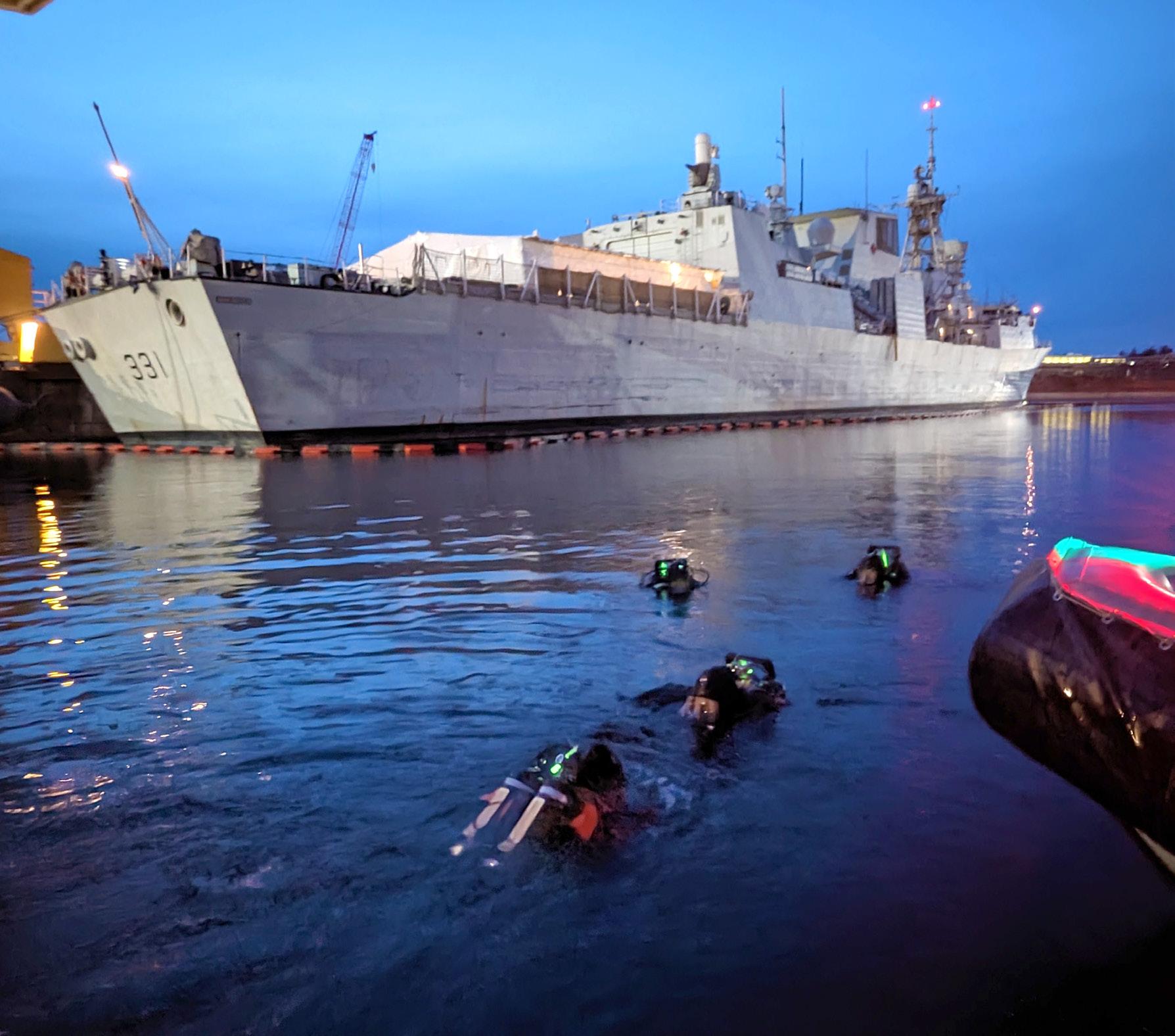
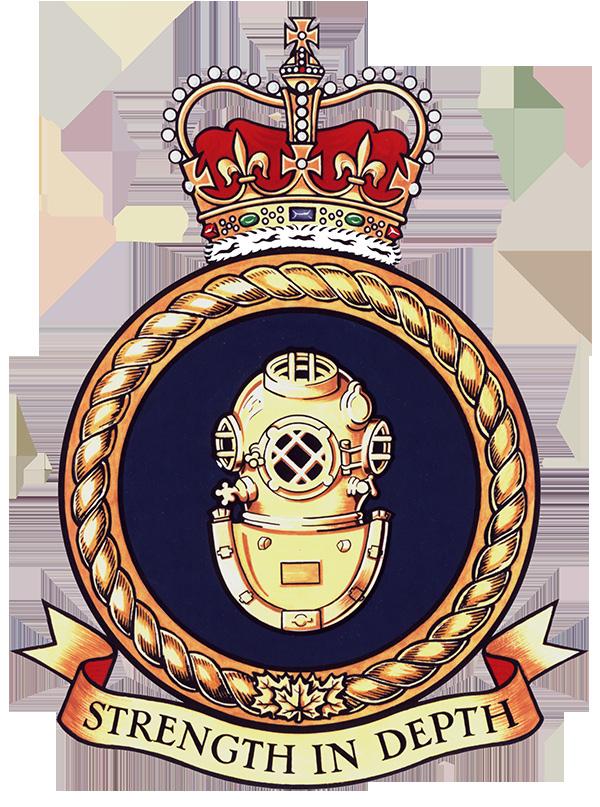











 peter Mallett Staff Writer
peter Mallett Staff Writer





























The Esquimalt Tritons won a silver medal at the Canadian Armed Forces Men’s Basketball Championship May 1-4 at Shearwater, N.S.
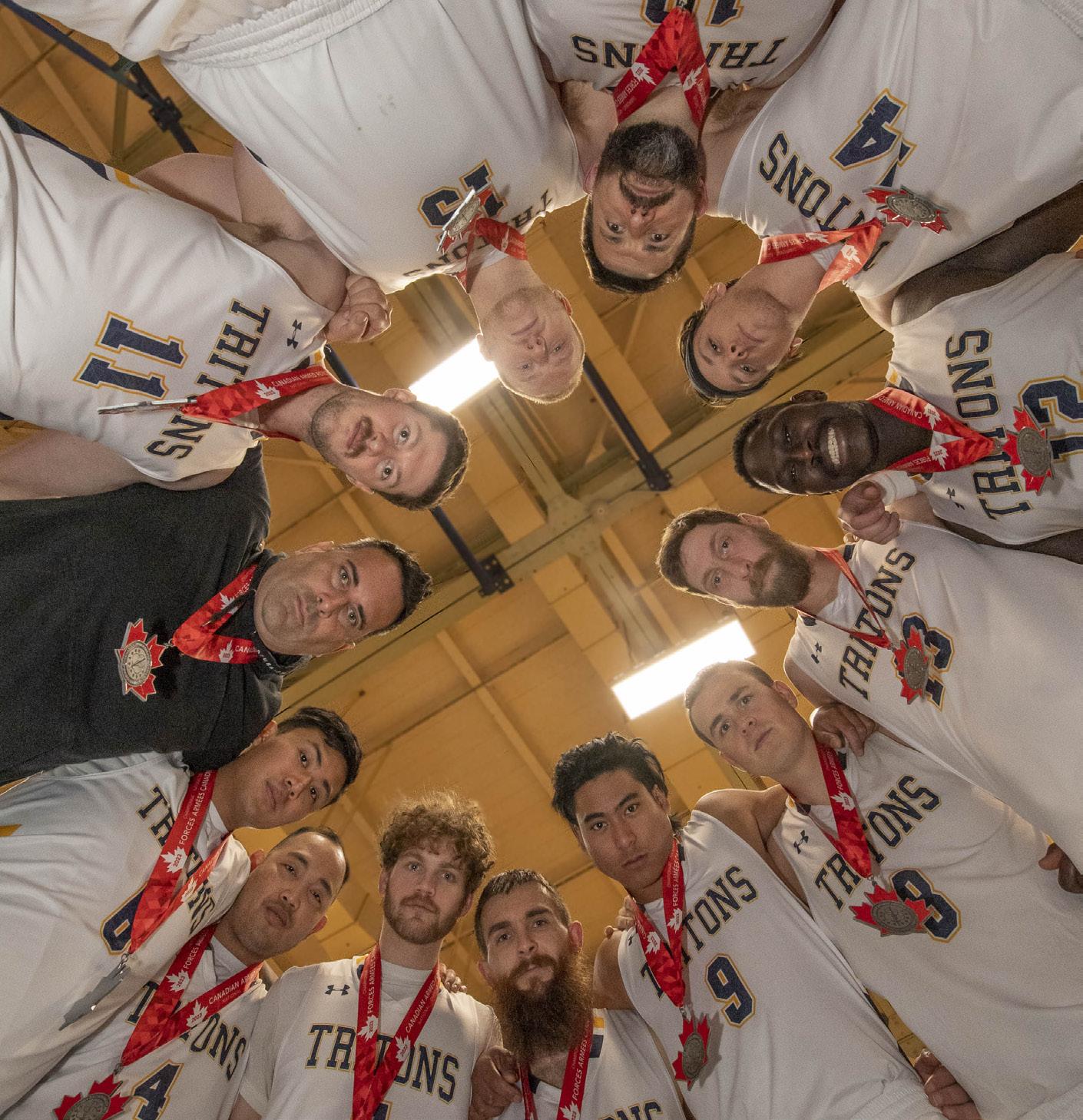
The Halifax Mariners avenged an earlier loss to Esquimalt in round-robin play. They lifted the tournament trophy with an 88-72 victory in the gold medal game on May 4 at CFB Shearwater.
Halifax jumped out to an early lead and never looked back, paced by stellar shooting and 35 points from tournament MVP, small forward Captain Nic Leger.
Lieutenant (Navy) (Lt(N)) Owen Murphy, Deputy Division Commander at Naval Fleet School (Pacific) and Tritons' point guard, was also the tournament MVP and scored 30 points in the final. He was quick to credit his opponents for capturing the tournament title.
“Halifax played a great game; their shooting was excellent, and they could hurt us on transition and rebounds,” Lt(N) Murphy said. “As opponents, they were fun to play against, highly competitive, showed great sportsmanship and were definitely deserving of the win.”
The point guard captured single-game MVP honours in three of his four games. He averaged 26 points per game heading into Esquimalt’s rematch with Halifax.
At Shearwater, Esquimalt topped the round-robin standings with wins over Halifax (86-84), Petawawa (77-72) and a 69-68 decision over Halifax in the tournament semi-final. Halifax reached the championship game with an 81-54 win over Petawawa.





Esquimalt qualified for the National Championship tournament after compiling a perfect 5-0 record at the Canada West Regional tournament at Edmonton Garrison in February.
Esquimalt’s only other defeat this year was an 83-48 loss to Ottawa in the roundrobin, a game in which Lt(N) Murphy sat out due to a bruised knee. Tritons coach Josh Buck had previously described Lt(N) Murphy as a true dynamo and said he didn’t disappoint at Nationals.
“He has always been the anchor of our team and has an unusual amount of athletic ability,” said Buck.


Esquimalt centre, Acting Sub-Lieutenant (A/SLt) Brent Martindale also had a massive tournament and was averaging 12.8 points over four games heading into the final and scored 24 points in that game.
The Tritons couldn’t overcome an earlygame lapse against Halifax as their offence sputtered and shooting went uncharacteristically cold in the opening minutes. Esquimalt rallied late in the first half with a one-two-scoring punch between Lt(N) Murphy and A/SLt Martindale, cutting the Mariners lead to one point. Halifax weathered another Tritons onslaught early in the second half before going on a 9-2 run and pulling away from Esquimalt for good.
Buck has been involved with the Tritons for the past 20 years as a coach and says, despite the disappointing conclusion, this year’s Tritons team is the best he has seen yet.
Lt(N) Murphy also credited his teammates for a great season.
“Everyone on this team was locked in and contributing regardless of their minutes on the floor,” Lt(N) Murphy said. “The bench was energetic, the team cohesion was great, and most importantly we trusted each other.”













The Canadian Armed Forces (CAF) policy on the Post Living Differential (PLD) is being replaced by the Canadian Forces Housing Differential (CFHD).







Members must apply by June 1 to receive the entitlement when it starts in July. Applications can be submitted through Orderly Rooms. Applications received after June 1 will still be processed, but members will not be guaranteed to receive their first payment during the July pay period. However, these payments will be backdated to the July 1 inception date.




Members looking to receive the entitlement must complete a DND 4899 (Canadian Forces Housing Differential Entitlement) form and submit supporting documents. Forms are located in members’ Orderly Rooms and the DND forms catalogue. Stepby-step instructions on how to fill out the form can be found on the CFB Esquimalt
Base Administration Sharepoint site under “CFHD Application SOP for Members” in English and French.













Supporting documents include posting instructions with Move Authority and proof of mortgage, lease, or rental agreement. Members are being encouraged to submit their applications now.




CFHD calculates the difference between housing costs in the area the CAF member is posted to and a percentage of the member’s monthly pay. Each member’s situation is unique based on rank, location, and, eventually, their time in one location. The step-by-step instructions and references are available for members to see if they qualify. The new CFHD has been developed to ensure CAF members who most require support in adjusting to the housing costs in different locations in Canada are prioritized. Post Living Differential (PLD) will cease at the end of June. Members will not receive PLD in July.

«Trouviez votre rythme»
 Natalie Bandringa
Natalie Bandringa
Capital Regional District, with input by CPO1 Al Darragh, Base Chief
CFB Esquimalt is working to improve the quality of life for Defence Team members and promote adopting more sustainable commuting practices.
To help us achieve this, we have partnered with the Capital Regional District (CRD) to pilot a Sustainable Commute Planning initiative. The goal is to encourage more CFB Esquimalt Defence Team members to choose sustainable modes of transportation (walk, bike, bus, carpool) for their daily commute more often by reducing barriers in accessibility, safety, convenience, and comfort. CFB Esquimalt (all locations) and Seaspan (Esquimalt Graving Dock and Colwood Warehouse locations) are participating in this pilot.
CFB Esquimalt is the third largest employer in the capital region. It employs approximately 6,500 people, comprised of 4,500 military members and 2,000 civilians. Whether you currently drive, bike, bus or carpool and are looking to improve your commute or have concerns about traffic safety, active transportation, or accessibility concerns on your route or at your worksite, we hope that your participation in this pilot will start these conversations and work toward improvements.
As the first step to better understanding current commute habits to and from CFB Esquimalt Base and Reserve Units, the CRD will conduct an online baseline survey between May 15 and May 31, 2023.




Chief Petty Officer First Class (CPO1) Al Darragh, Base Chief, has sent an email with a link to the survey: https://surveys.crd. bc.ca/surveys/cfb-esquimalt-commute. The CRD manages all information collected and will only share disaggregated and summarized data with CFB Esquimalt and other partners such as local government planners and engineers and BC Transit.
The survey seeks to gather information such as where you are commuting to and from, your primary current and preferred mode(s) of commuting, and what factors affect your mode choice. You will also have the opportunity to identify locations where you have concerns or ideas to improve road, trail, or worksite infrastructure to encourage sustainable commuting or other ways to make it easier. The survey offers an option to identify yourself for follow-up conversations should you wish to do so.
At the end of the survey, you will have the opportunity to enter a contest to win one (1) of 25 gift cards (valued at $50) from select local pizzerias!






Please complete the survey. It should take about 15-20 minutes of your time.



3

BZ to the NESOP RQ-S3 Session 0033 graduates, who were recognized on May 5 for achieving a high standard and are excited to head out to the fleet to put their trade skills to use!

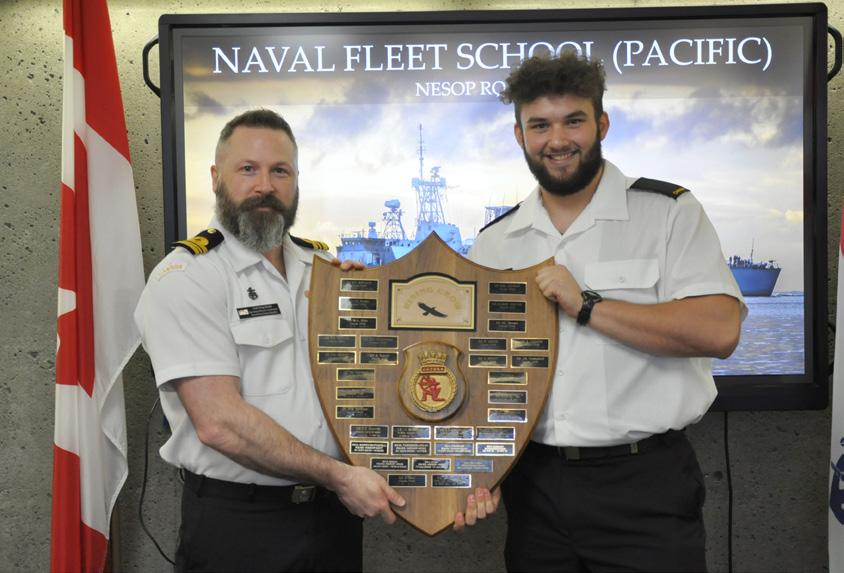
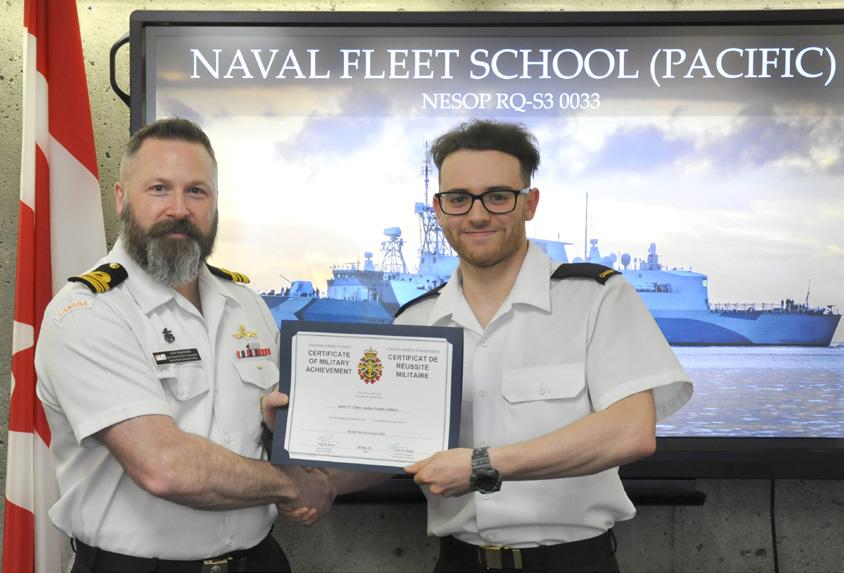

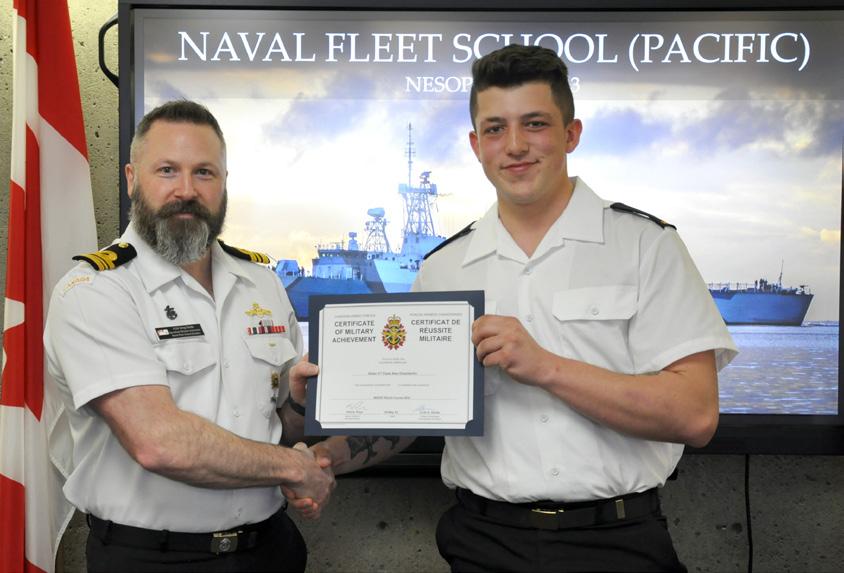

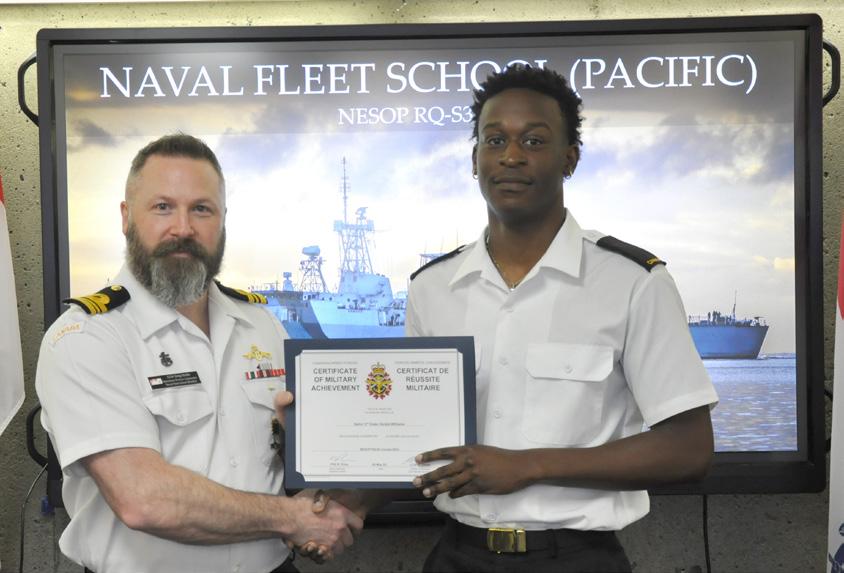

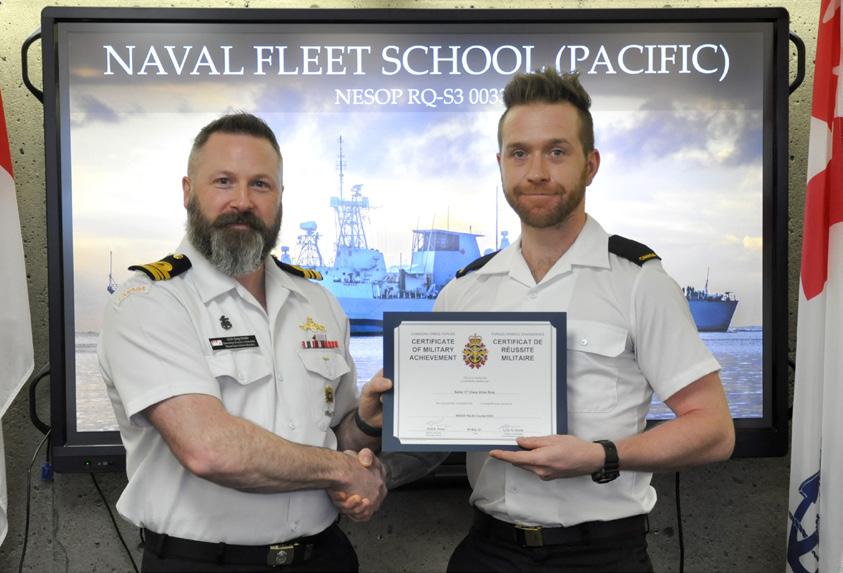





Powell River-based Sunshine Coast Health Centre and the Georgia Strait Womens Clinic provide highly personalized addiction, mental health and trauma treatment for male and female clients respectively. Get daily 1-on-1 inpatient or outpatient treatment tailored to your unique needs.

Services include 24 hourmedical service, psychiatric assessment, EMDR, rTMS, psychotherapy, hypnotherapy and much more.


Serving the Department of National Defence and Veterans Affairs Canada since 2009.
